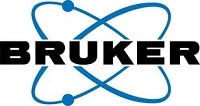Nuclear magnetic resonance (NMR) spectroscopy is a sophisticated analytical tool for investigating the structure, dynamics, reaction state, and chemical environment of molecules. NMR can simultaneously identify and quantify numerous constituent components of a sample. In addition, it can be targeted to detect the amount of a particular species. Furthermore, since NMR is based on the application of a magnetic field rather than radiation, it does not damage the sample and can be applied to both solutions and solids. It is thus widely used in many research areas and also in industry quality control protocols.

© Phonlamai Photo/Shutterstock.com
Although NMR provides tremendously detailed information, it can be hindered by low sensitivity when nuclei with a low natural abundance, such as 13C, are being studied. Although the sensitivity can be improved by using a larger sample, increasing the scan duration or using a higher magnetic field, it is preferable to use a more precise method, such as dynamic nuclear polarization (DNP)1.
Dynamic nuclear polarization
DNP can enhance NMR signals by several orders of magnitude through the use of highly polarized electrons to improve the nuclear spin polarization2. Spin polarization from the electrons is transferred to the nuclei of the sample to be analysed.
Nuclear spins are polarized in the solid state and then rapidly dissolved using a superheated solvent to yield a “hyperpolarized” solution that has an NMR signal several thousand-fold greater than at thermal equilibrium. The technique has proved especially useful for 13C metabolic imaging3,4.
The polarizing agent that provides the free electrons is typically a stable organic free radical. Nitroxides and trityls are the most commonly used radicals for dissolution DNP. The broad electron paramagnetic resonance (EPR) spectra of nitroxides makes them most efficient for polarizing 1H, whereas trityl radicals with their narrow EPR spectra are best suited to 13C polarization.
DNP optimization
13C polarization can be further enhanced by the addition of paramagnetic compounds such as gadolinium-based contrast agents (GBCA). Such doping has been shown to enhance 13C DNP through reduction of electron T1 of the polarizing agent5. Changes in electron spectra do not occur with the addition of paramagnetic agents alone. Thus the increase in polarization is thought to be a consequence of the T1 effect and the interaction between the paramagnetic agent and the nuclei of the sample.
With NMR being used for increasingly complex investigations, research continues into optimization of the polarization procedure and the underlying physics of DNP in order to achieve the best results. A range of other metal ions, but most commonly manganese (Mn2+) and copper (Cu2+), have been used as to effectively enhance trityl DNP, supporting further investigation into the use of metal ion contrast agents as additives to optimise DNP NMR.
Transition metal doping
Recent research investigated for the first time the use of doping with paramagnetic transition metal complexes on the efficiency of 13C DNP6.
The polarizing agent, trityl OX063, doped with the paramagnetic transition metal complex Mn-NOTA, Cu-NOTA or Co-NOTA was used in the analysis of 13C sodium acetate. In addition, a control sample was prepared with no transition metal added. Each solution was evaluated by EPR at the National High Magnetic Field Laboratory using a Bruker E680 EPR spectrometer with a TE011 cylindrical cavity.
Data showed that doping with Mn-NOTA substantially improved the solid-state 13C DNP signal, giving a three-fold increase in signal6. In contrast, neither of the other two transition metal complexes, Cu-NOTA and Co-NOTA, provided enhancement of solid-state 13C DNP EPR signals.
W-band EPR measurements subsequently revealed that the trityl OX063 electron T1 was significantly reduced in the samples doped with Mn2+. Interestingly, this was not observed in DNP samples doped with either Cu2+ or Co2+, despite their paramagnetic nature.
This latest research highlights that effects observed with one member of a group of metals cannot necessarily be translated to other members of the group. It clearly illustrates that not all paramagnetic additives are beneficial in the enhancement of DNP to increase the sensitivity of NMR. Importantly, it also provided direct evidence that electron T1 reduction of the polarizing agent by a paramagnetic additive is an essential requirement for achieving improvement in solid-state 13C DNP signals.
References
- Abragam A, Goldman M. Rep. Prog. Phys. 1978; 41:395–467.
- Ardenkjaer-Larsen JH. J. Magn. Reson. 2016; 264:3–12.
- Gallagher FA, et al. Prog. Nucl. Magn. Reson. Spectrosc. 2009; 55:285–295.
- Nelson SJ, et al. Sci. Transl Med. 2013;5:198ra108.
- Niedbalski P, et al. J. Chem. Phys. 2017;146:014303.
- Niedbalski P, et al. J Phys Chem. A. 2017;121(48):9221–9228.

This information has been sourced, reviewed and adapted from materials provided by Bruker BioSpin - NMR, EPR and Imaging.
For more information on this source, please visit Bruker BioSpin - NMR, EPR and Imaging.